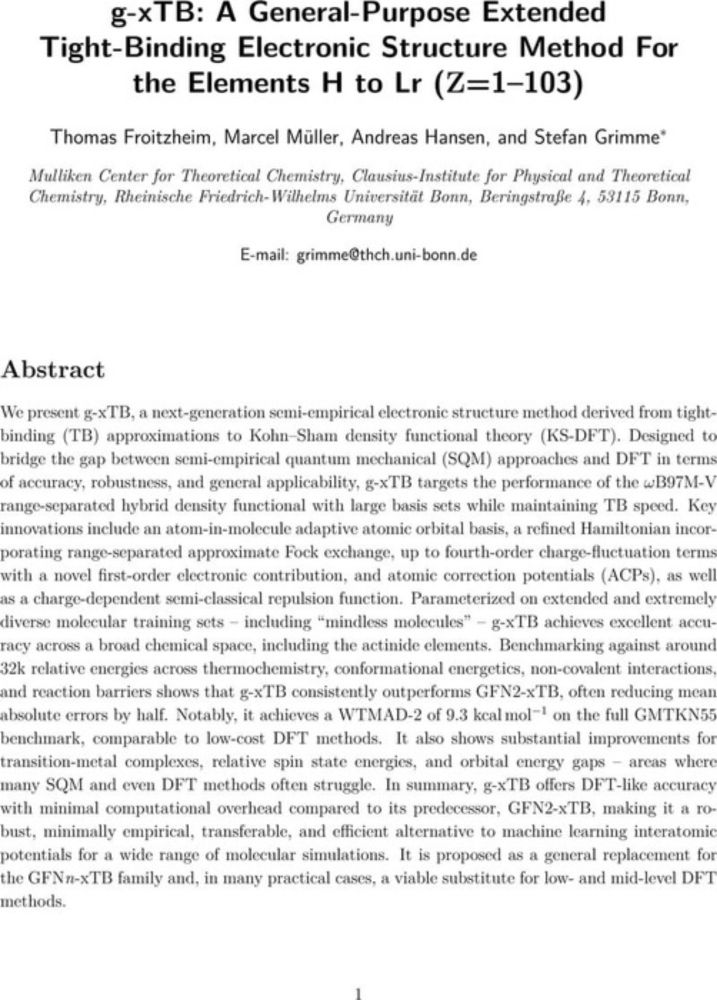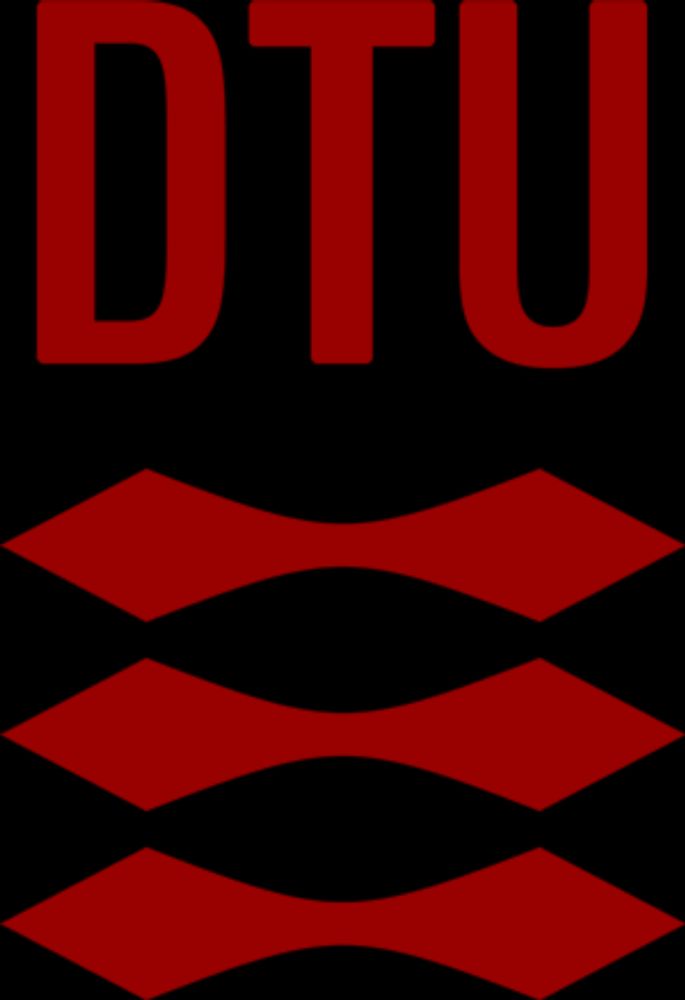Modeling at this scale would not be possible without the fast but reliable R^(2)SCAN-3c from Stefan Grimme's group for geometries and frequencies and a well-optimized engine as ORCA 6 (FACCTs) - thanks for enabling projects like this! (7/7)
07.10.2025 13:53 — 👍 0 🔁 0 💬 0 📌 0
Additional thanks to the other oxoammonium pioneers involved in this work. This was a long journey! Jonas Rein, Matt Sigman, Song Lin and Scott Miller. (6/7)
07.10.2025 13:53 — 👍 0 🔁 0 💬 1 📌 0
This tells us that functional generality is not necessarily tied to mechanistic homology but can be achieved through more "versatile" catalysts, able to accomodate (but still strictly regulate) multiple activation modes. (5/7)
07.10.2025 13:53 — 👍 0 🔁 0 💬 1 📌 0

A figure showing the different interaction modes of different substrates with P7
But that doesn't mean that the most general catalyst P7 is a one-trick-pony: different substrates that are desymmetrized by P7 don't necessarily do so via the same activation topology. They might "bind" with different hydrogen bond partners, following specific constraints of that substrate! (4/7)
07.10.2025 13:53 — 👍 0 🔁 0 💬 1 📌 0

A graph showcasing the reduction in accessible conformational space for successive generations of the catalysts.
Two big takeaways: yes, with flexible catalysts, increased preorganization and convergence towards a single activation mode follow the catalyst evolution. And we tracked this effect for almost every point change in the optimization, with atomistic resolution. (3/7)
07.10.2025 13:53 — 👍 0 🔁 0 💬 1 📌 0

Generality-oriented optimization of enantioselective aminoxyl radical catalysis
Optimizing a catalyst based on median enantiomeric excess across a diverse substrate pool broadens its applicability.
I teamed up with baymate Soren Rozema and the rest of the chiral oxoammonium peptides team in what became the largest computational study I have ever directed (for now?) on the Miller/Lin/Sigman peptidyl oxoammonium catalyst for meso-diol desymmetrization (from www.science.org/doi/10.1126/...) (2/7)
07.10.2025 13:53 — 👍 0 🔁 0 💬 1 📌 0
We often strive for a general asymmetric catalyst. But why is a catalyst general? How? Featurization and data analysis are great but don't give you any atomistic information. We wanted to find out, and about 6000 DFT free energies later, here we are. 🧵(1/7)
pubs.acs.org/doi/10.1021/...
07.10.2025 13:53 — 👍 2 🔁 0 💬 1 📌 0

Total Synthesis of Chartelline C
Chartellines are cytotoxic marine alkaloids that were isolated in the late 1980s. Their unique, heavily oxidized structures, comprising a spirocyclic β-lactam, a halogenated indolenine, a chloroenamide, and a 2-haloimidazole, have motivated extensive efforts toward their synthesis. However, only a single synthesis of any chartelline has been reported in the nearly 40 years since their isolation. Here, we describe a route to chartelline C (3) from the macrolactam 21, an intermediate we employed en route to the related securine and securamine alkaloids. The key challenges in converting macrolactam 21 to chartelline C (3) involve stereocontrolled construction of the C2–C3 enamide, isomerization of the trans-C10–C11 alkene, formation of the strained spirocyclic β-lactam, and chlorination of the enamide. Each of these challenges was addressed by an unconventional approach. The macrolactam 21 was converted to cis-enamide (2Z,10E)-24 by in situ masking of the C12 ketone, followed by stereoselective acid-catalyzed elimination of the C2 carbinolamide. The C10–C11 trans-alkene was isomerized by a photolytic process; control experiments suggest that this isomerization occurs by energy transfer. The β-lactam was constructed by a solid-state reaction involving the adsorption of the bromoindolenine 26 onto activated basic alumina. Late-stage enamide chlorination, which had been an obstacle in prior approaches, was accomplished by a novel photoredox-mediated halogenation. These latter studies suggest that N-haloanomeric amides and N-haloguanidines may act as halogen atom transfer agents under thermal or photolytic conditions. Finally, we show that chartelline C (3) reacts with sulfur-based nucleophiles, suggesting that further studies of their biological activity may be warranted.
Our approach to the total synthesis of chartelline C, out now in JACS. Photochemistry and unique topology gave way to some really interesting reactivity!
pubs.acs.org/doi/10.1021/...
01.07.2025 22:23 — 👍 22 🔁 2 💬 0 📌 0
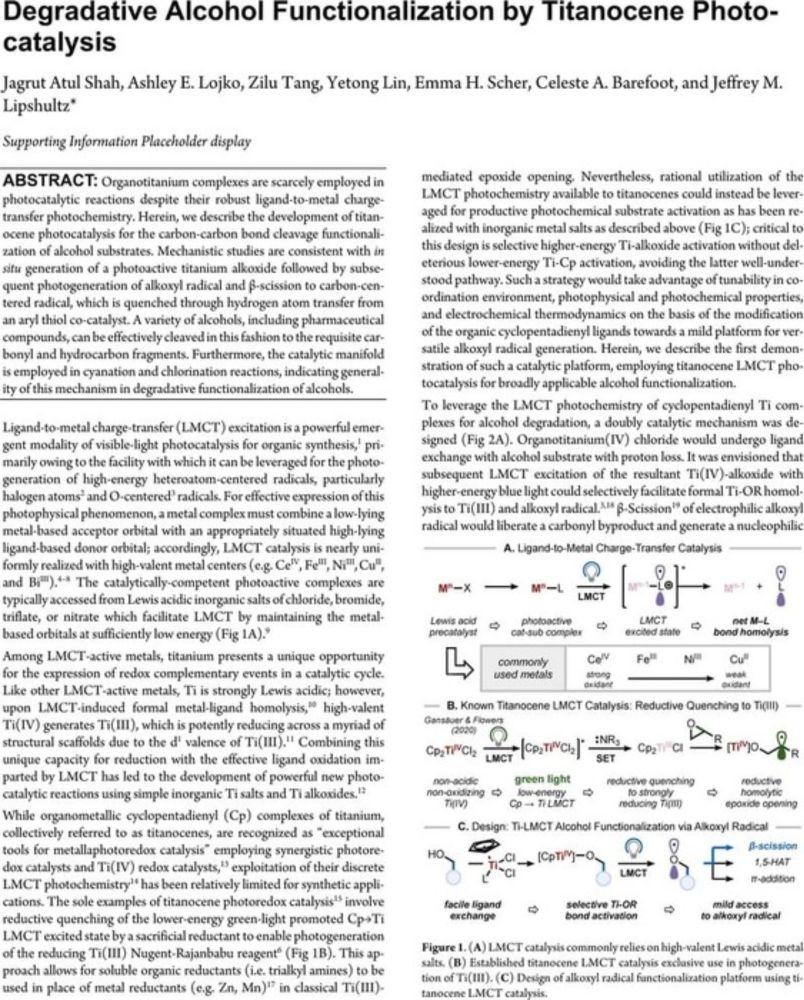
Degradative Alcohol Functionalization by Titanocene Photocatalysis
Organotitanium complexes are scarcely employed in photocatalytic reactions despite their robust ligand-to-metal charge-transfer photo-chemistry. Herein, we describe the development of titanocene pho-t...
Sharing our 1st preprint on our work on organo-Ti photocatalysis! We've found that titanocenes are photoactive catalysts for alcohol activation by LMCT excitation, enabling β-scission of alkoxyl radicals for degradative functionalization. Congrats Jagrut, Ashley & the whole team!
11.06.2025 14:27 — 👍 15 🔁 4 💬 2 📌 2
Redirecting
Have you ever wondered if there is a better intuitive way of understanding ambident reactivity than HSAB or orbital vs. charge-control? Kindly refer to "Hard and Soft Electrons and Holes" that is in press at Chem by Cell Press.
doi.org/10.1016/j.ch...
08.07.2024 15:14 — 👍 3 🔁 1 💬 1 📌 0
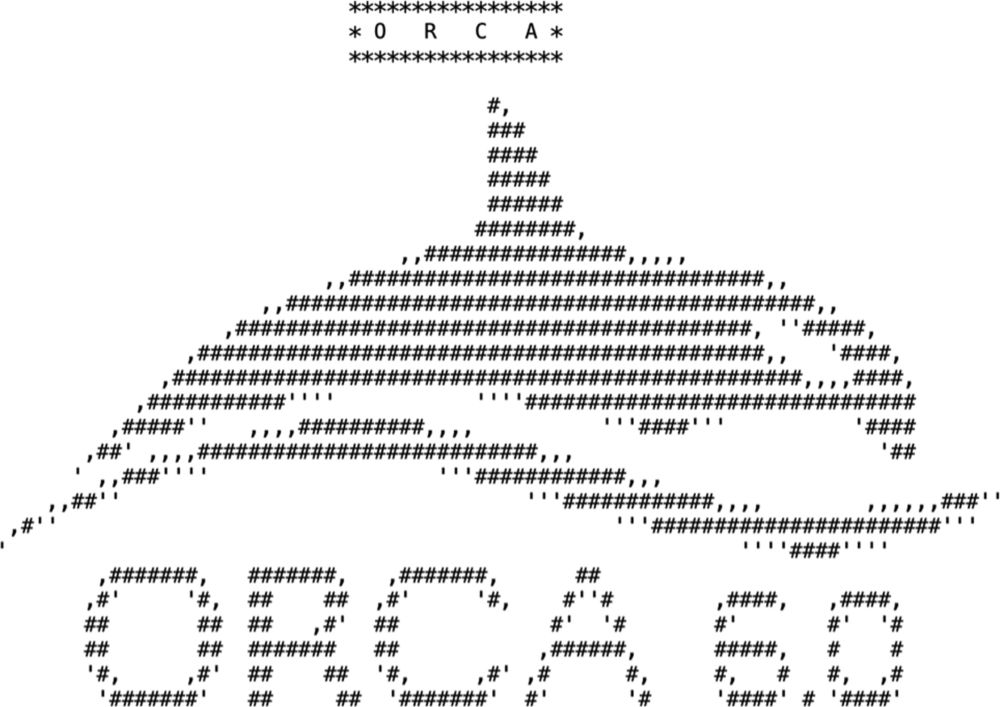
Software Update: The ORCA Program System—Version 6.0
This article describes the philosophy behind- and new features in the ORCA quantum chemistry program suite, version 6.0.
Dear ORCA community,
it took a while, but now the ORCA 6.0 article is out! It serves as generic reference for ORCA 6.x. However, if you are serious about supporting our efforts, please take note of the suggested citations at the end of each ORCA run.
wires.onlinelibrary.wiley.com/doi/10.1002/...
28.04.2025 09:01 — 👍 48 🔁 18 💬 1 📌 1

Opinion | The Uncertain Fate of the Young American Scientist (Gift Article)
Young researchers are choosing between staying in science and staying in the United States.
www.nytimes.com/2025/04/03/o...
Really important piece to share widely. Too many Americans don’t know how severe a threat this Administration poses to our scientific infrastructure, global leadership, and health security
04.04.2025 07:32 — 👍 481 🔁 305 💬 18 📌 57
Always such cool, elegant, useful and mechanistically comprehensive studies - really the best of reads! Very inspiring, congrats team :)
03.04.2025 18:13 — 👍 1 🔁 0 💬 0 📌 0
Thanks to the Synthesis Workshop for having me! These folks are creating a wonderful, public set of chemistry content, check their work out :)
08.03.2025 14:50 — 👍 1 🔁 0 💬 0 📌 0
If the federal funding situation continues to deteriorate, I would be willing to give talks wearing a NASCAR-style jacket saturated with sponsor's logos
31.01.2025 20:53 — 👍 17 🔁 2 💬 0 📌 0

Crystal structures for two products with different ring sizes, showcasing how the major enantiomer for each is a different "cup".
We were hoping to find a single catalyst that would prove general across ring sizes besides the different mechanistic paradigms - and luckily, we did. But, we were quite surprised when both DFT and X-Ray, counterintuitively, told us we were making the opposite enantiomer of the two ring sizes! [3/3]
23.01.2025 21:37 — 👍 0 🔁 0 💬 0 📌 0

A scheme describing the concept of maximally preorganized disconnection in the retrosynthesis of cyclic compounds.
...proved effective to synthesize strained medium-sized rings of two different sizes with perfect intramolecular selectivity. To the best of our knowledge, this is the first method to synthesize strained, congested seven-membered rings under mild conditions. [2/3]
23.01.2025 21:37 — 👍 0 🔁 0 💬 1 📌 0

A graphical table of content for the journal paper described in this post. 7- and 8-membered rings that feature unusual ring chirality are synthesized in an enantioenriched fashion under mild conditions by the action of the same iminophosphorane superbase catalyst.
It is finally out: my long-time obsession with "inherently" chiral medium-sized rings now has a catalytic, enantioselective method. After a number of disconnection attempts, we developed a strategy based on choosing the maximally preorganized disconnection, which [1/3] pubs.acs.org/doi/10.1021/...
23.01.2025 21:37 — 👍 12 🔁 2 💬 1 📌 0
Wondrous!
08.01.2025 09:05 — 👍 0 🔁 0 💬 0 📌 0
I don't know the origin, but I believe it must be a self-reinforcing loop - clarity ties well with familiarity, so people end up adopting what they read. Reading some robotic papers though, I miss some charm and would be willing to sacrifice a tad of "clarity" for readability. What do you think?
07.01.2025 16:57 — 👍 0 🔁 0 💬 1 📌 0
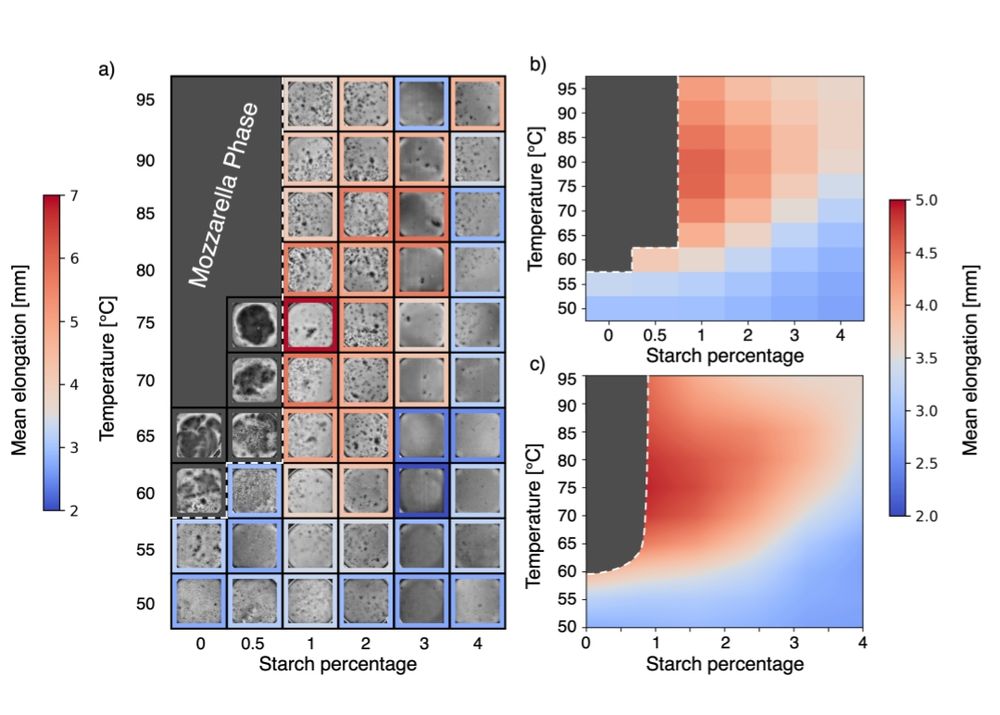
1/n Some time ago my colleague, excellent cook, and friend Ivan told me: "Cacio e pepe is the recipe that I screw up more often. Let's make a project studying systematically the physics of that sauce".
Prepare to get cheesy, I'm glad to share the Cacio e paper preprint:
arxiv.org/abs/2501.00536
04.01.2025 09:33 — 👍 498 🔁 167 💬 25 📌 68
Most people know about Nicolaous's work, but the original reports are actually from Mascaretti! In here they do describe some workup techniques that you might find useful:
J. Org. Chem. 1994,59, 7259-7266
This should be the original reference, as far as I know:
Tet. Lett. 29, 52, 1988, 6893-6896
09.12.2024 19:09 — 👍 1 🔁 1 💬 0 📌 0
One week left to apply to this position in my group.
29.11.2024 13:18 — 👍 19 🔁 9 💬 0 📌 2
Since 1921, Organic Syntheses has provided the chemistry community with detailed, reliable, & carefully checked procedures for syntheses of organic compounds.
https://www.bodegacats.nyc
Supramolecular Chemist (PI @ Durham University) interested in enzyme mechanism and mimicry, cages and catalysis
PostDoc at the University of Bologna 🇮🇹🇪🇺
#CompChem #QuantumComputing #AI and much more!
An open access content creation initiative in chemistry, featuring video podcast episodes, courses, problem sets, virtual research posters, and more. Homepage: synthesis-workshop.com
Synthetic Organic Chemistry at TU Dortmund:
www.ccb.tu-dortmund.de/hansmann
Improving all lives through the transforming power of chemistry
UC Berkeley ChemBio PhD Candidate in Schepartz Lab | weirdly big fan of the term “bioorganic chemistry” | Northwestern Alum | 🇵🇷🇭🇰
Editor at Science Magazine, shepherding chemistry papers; views here are my own; he/him
Professor [Scripps Research, La Jolla, CA]
⬡ Chemical synthesis, education, people person big and little
Keywords: MHAT, (super)natural products, salvinorin, Galbulimima, 14-3-3, opioids, GABAa, Synthordle
Should I not love that great city?
A chemistry journal published by SpringerNature
.
Synthesis and catalysis research lab at Princeton University.
https://stache.princeton.edu
harnessing radicals & carbenes for organic synthesis
NSERC PDF@UIUC (Denmark lab)
Organic and computational chemist. Chemoinformatics+ML. Fan of (un)natural products.
Guitarist and music lover. 🇨🇦
Student-run account for the Sarpong group at UC Berkeley
Organic Chemistry Lab at ISIC EPFL, NCCR Catalysis, SNE ChemBio
https://www.epfl.ch/labs/lcso/ https://www.linkedin.com/in/lcso-lab/
Starter packs - OrgChem https://go.bsky.app/NSEFPFJ https://go.bsky.app/GwH8t
- Chem. in CH https://go.bsky.app/CdvVFKj





